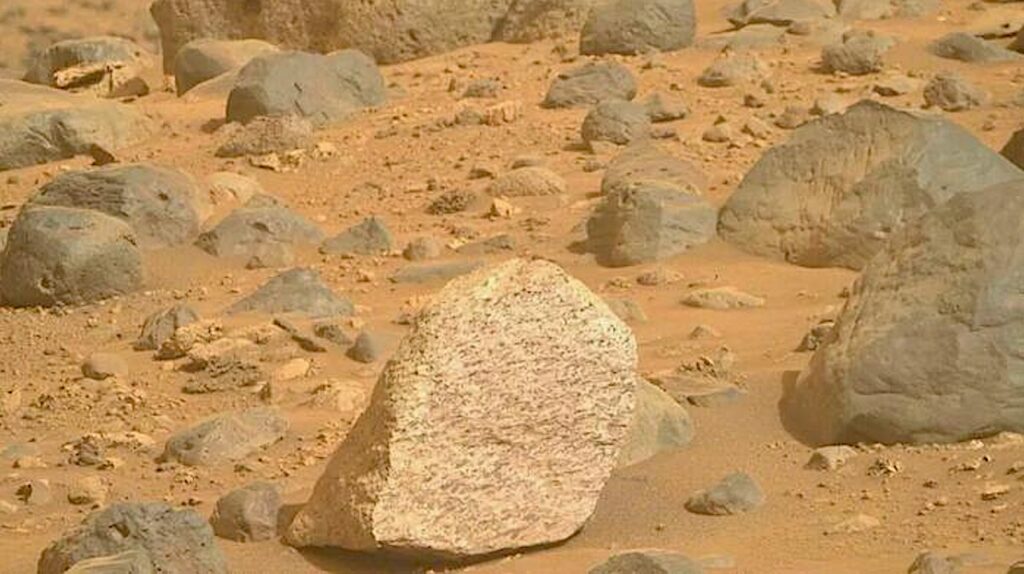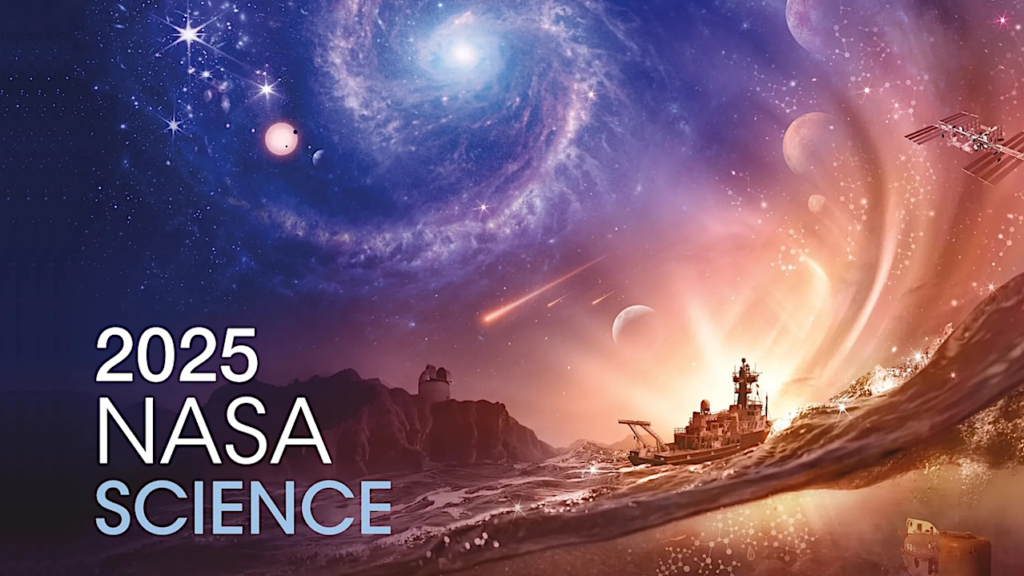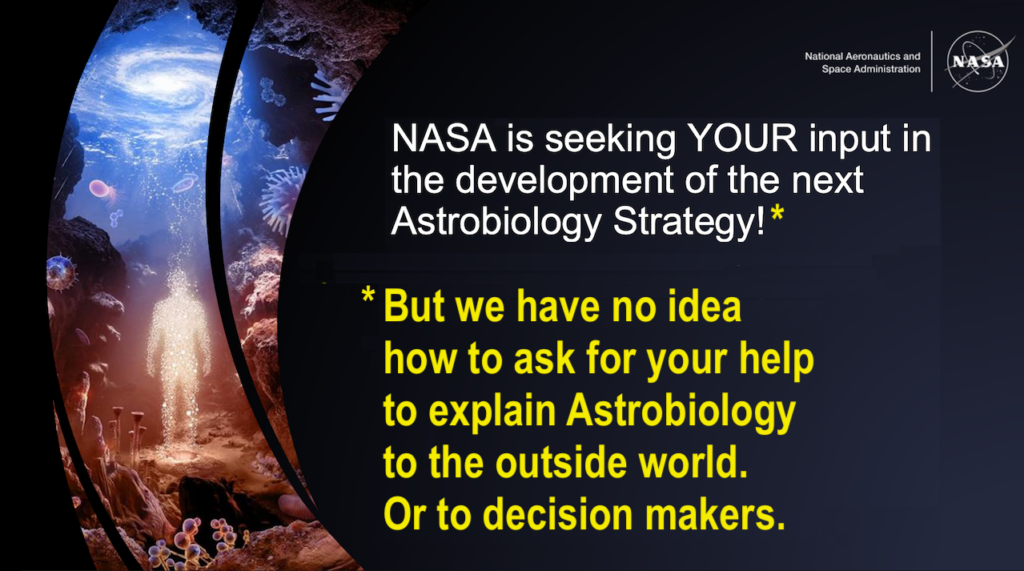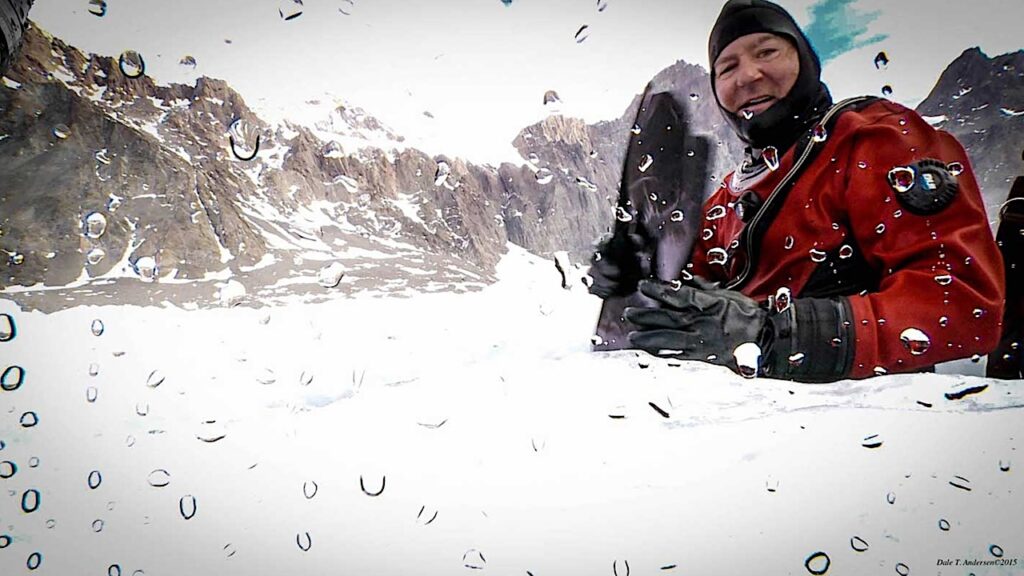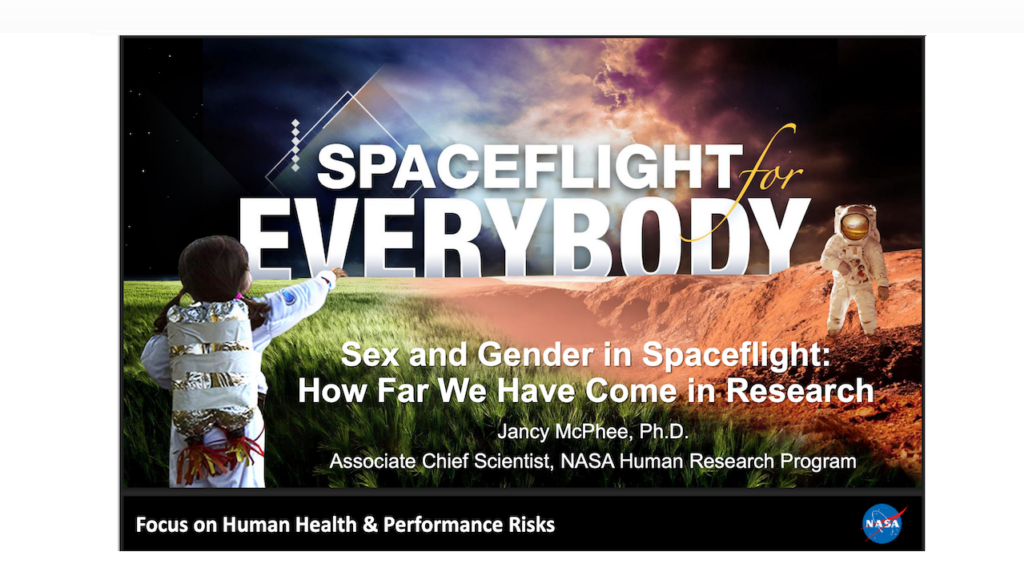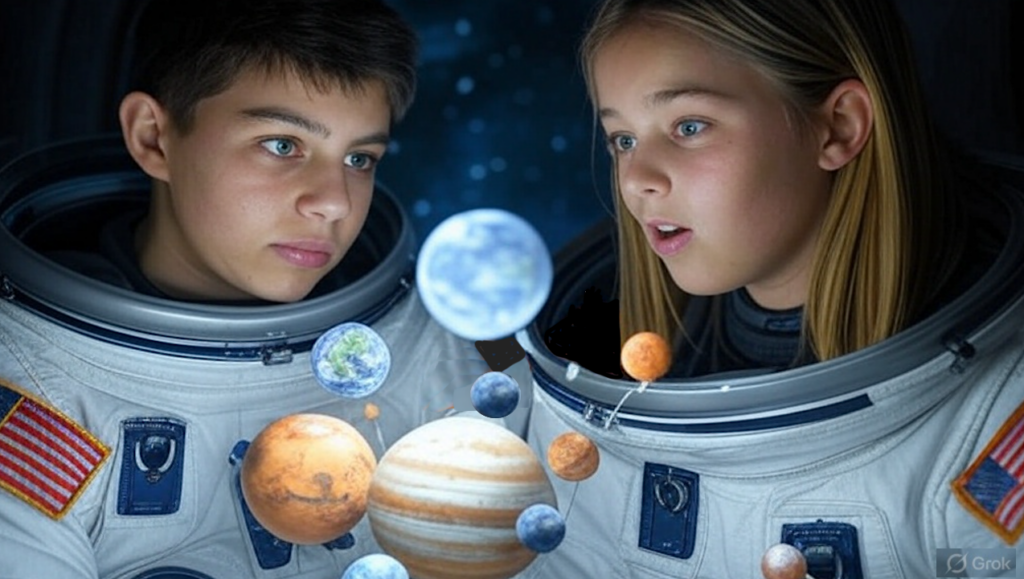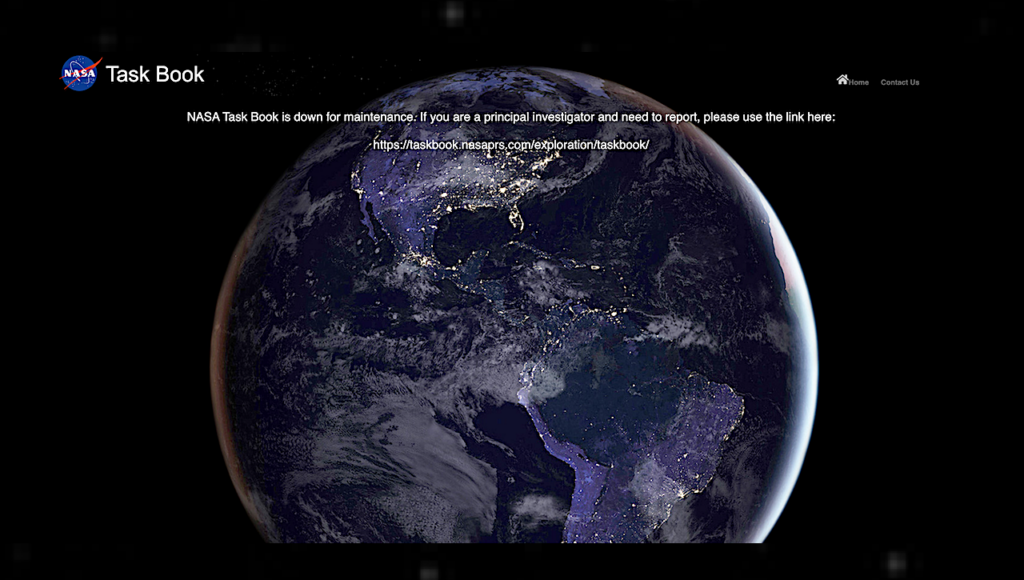Keith’s note: I have been editing Astrobiology.com – @Astrobiology – for 30 years. I ran peer review panels for NASA Exobiology research before that. There have been a lot of “almost” announcements over the past 30 or so years – but this one is really solid. We have not found extant life on Mars – but we seem to have found remnants of something biological from Mars’ deep past aka ‘biosignatures’ – in rocks ~350 million years old which match rocks of similar ages – with biosignatures – that we find here on our own planet from Early Earth. See NASA Says Mars Rover Discovered Potential Biosignature Last Year.
(more…)Keith’s note: according to this Reuters article: “NASA Chief of Staff Brian Hughes speaking at the same town hall, agreed, saying it would “probably be considered irresponsible” to wait for the congressional budget process. The letter added that Hughes recently ordered NASA science programs targeted for cancellation in Trump’s budget request to stop issuing press releases celebrating new scientific results and achievements.” In addition, senior staff at recent meetings at NASA with Hughes have been told not to expect any help from Congress in pushing back against the plan embodied in the President’s FY 2026 Budget Request i.e. multiple mission cancellations and large personnel layoffs. This is in direct contrast to an offer made last week to senior NASA staff by Acting Interim Administrator Duffy to listen to – and then consider – pushing for budget increases (restoration) for items planned for deletion – if a solid case can be made. And today the “Voyager Declaration”, signed by many NASA employees complaint about a variety of unpopular actions, certainly made national news. Word has it that Hughes and his staff were not at all pleased by this or the news coverage – especially CNN’s article. Meanwhile, consolidation of and deletion of various NASA social media accounts continues. Of course this has a side benefit of allowing those missions now scheduled to go away to not have any mention made of whatever scientific results they are still quite capable of providing. This of course hastens the ability for them to just fade away.
(more…)Keith’s note: there is an interesting article online at the Washington Post: These scientific advances were ‘Made in the U.S.A.’ Will they continue?: “All this knowledge can be labeled “Made in the U.S.A.” All this is our legacy, enabled by federal funding. In just a few months, the Trump administration has undermined U.S. dominance in science, built up over many decades. The federal funding that made America the world’s science leader is threatened with crippling reductions, not just for astronomy and space science but also for fundamental research in energy, chemistry, computer science and preventive medicine.”
(more…)Keith’s note: NASA’s Planetary Science Analysis/Assessment Groups have issued a document dated 6 May 2025, titled “AGness”. According to the authors (which has been annotated to enhance clarity, original document below), addressing members of the planetary science community: “The linked document below, The Keys of AGness, is a product of the collective Planetary Analysis and Assessment Groups (AGs), presented by their Chairs and vetted through their respective Steering/Executive Committees, and with community feedback. It captures what the community sees as the key pillars and important role of the AGs in the advancement of planetary science now and as we move into the future. The intended audience is multifold and includes NASA leadership, who are in the process of re-imagining the AG structure and support mechanism, and the broader planetary science community as a general reference and reminder of the forums, community building, support, repositories, and voice that the AGs provide.”
(more…)Keith’s 13 May update: someone at NASA fixed the calendar page at astrobiology.nasa.gov. Nothing else was changed. FWIW the NASA search engine still does not know where that website is. Keith’s 10 May note: We’re all concerned about things going offline, cancelled etc. While we only have the “skinny” budget from OMB, it is obvious that big cuts are coming to NASA space science. You’d think that NASA Science Mission Directorate (SMD) disciplines would be standing up to show their stuff – their value – as a hedge against possible cuts. Some are. Others are not. Indeed NASA seems utterly uninterested in telling you that it is spending billions of dollars on Astrobiology research and missions. Next to searching for the origin of the universe, searching for life elsewhere in the cosmos is one of the most profound things NASA does. If only NASA would act that way.
(more…)Keith’s note: as we resume lunar exploration and then head out to Mars and beyond in search of life, we will need a different mix of skills in the humans that we send out on these long terms expeditions to distant, alien places. Dale Andersen is a prototype of those future explorers. This is what he has been up to – And here’s news about the award: Astrobiologist Dale Andersen Receives Explorers Club Finn Roone Memorial Award: “Dale T. Andersen, PhD, a senior scientist at the Carl Sagan Center of the SETI Institute, has spent nearly five decades exploring Earth’s most extreme environments. A pioneer in scientific diving in Antarctica’s perennially ice-covered lakes, Andersen’s research focuses on microbial ecosystems in extreme settings, with studies in both Antarctica and the Arctic. His discoveries, including large, modern conical stromatolites in Lake Untersee, provide key insights into life on early Earth and serve as analogs for potential life on Mars and icy moons like Europa. Andersen’s work continues to inspire exploration, advancing public understanding of planetary science and the resilience of life.” P.S. The man in the picture below – third from the right is Sir Edmund Hillary.
(more…)Keith’s note: According to “NIH cancels its first and largest study centered on women“ in Science magazine: “President Donald Trump’s administration appears to be killing much, if not all, of a historic initiative that was the first, and is still the largest, National Institutes of Health (NIH) effort centered on the health needs of women.” To its credit NASA (often with NIH) has looked at physiology factors that differentially affect female vs male astronauts. Will new government rules bring that to a halt? NASA presentation.
(more…)Keith’s note: NASA has led space science and “Made America Great In Space” for more than half a century. Let’s not let that science leadership fade. Let’s expand it further. NASA has led the way by:
- touching the sun
- visiting every planet in our solar system
- sending humans to walk on another world
- doing the first offworld search for life
- moving an asteroid
- finding water on the Moon and Mars
- discovering oceans inside icy moons
- sailing across interstellar space
- peering back to the dawn of the universe
- developing a global brand that all nations aspire to
Keith’s note: Space Science Week 2025 – March 31-April 4, 2025 “is the joint meeting of the Space Studies Board of the U.S. National Academies discipline committees in collaboration with the Aeronautics and Space Engineering Board and Board on Physics and Astronomy.” The 1 April plenary webcast is open to anyone. According to the agenda Janet Petro is speaking at 9:20 am EDT.
(more…)Keith’s note: It looks like the NASAPRS “NASA Task Book is down for maintenance” according to its website at https://taskbook.nasaprs.com/. It has been offline since last week. Have a look at these two papers I found rather quickly that use a forbidden DEIA word. I’ll bet they are not there when this resource comes back online. I have an archive online here at Astrobiology.com
- NASA Spaceline Current Awareness List #1,111 2 August 2024 (Space Life Science Research Results) “Asrar FM, Bolles D, Ngo-Anh TJ. Healthcare can learn from space exploration to champion disability inclusion. Commun Med (Lond). 2024 Jul 25;4(1):147.Note: From the abstract: “People with disabilities, including healthcare professionals, encounter many obstacles. The space sector is taking steps towards promoting equity, diversity, inclusion and accessibility, including developing the world’s first parastronaut program. Here, we propose that healthcare can learn from space in enhancing disability inclusion.” This article may be obtained online without charge.”
- NASA Spaceline Current Awareness List #1,078 8 December 2023 (Space Life Science Research Results): “Mandt KE. Increasing diversity on spacecraft mission teams reduces risk.Science. 2023 Dec 8;382(6675):eadk7373. Online ahead of print. Journal Impact Factor: 56.9″
Larger image First Reported Occurrence And Treatment Of Spaceflight Medical Risk On ISS, LSU “Ultrasound examinations of the astronauts’ internal jugular veins were performed at scheduled times in different positions during the mission. Results of the ultrasound performed about two months into the mission revealed a suspected obstructive left internal jugular venous thrombosis (blood clot) in one astronaut. The astronaut, guided in real time and interpreted by two independent radiologists […]
Is @NASA really doing genomics research as part of #Artemis #Moon2024 @NASAGeneLab? A visit and search of your website at https://t.co/dqdn6YyP64 shows no mention of research into human genomics – or other omics in a 0.16G or lunar environment. https://t.co/KfHFL8DFmT — NASA Watch (@NASAWatch) May 17, 2019 FWIW @NASAGeneLab A simple search for "Moon" and "Lunar" at https://t.co/dqdn6YyP64 returns no search results. #Moon2024 #Artemis pic.twitter.com/H0hT8ebNkt — NASA Watch (@NASAWatch) May […]



